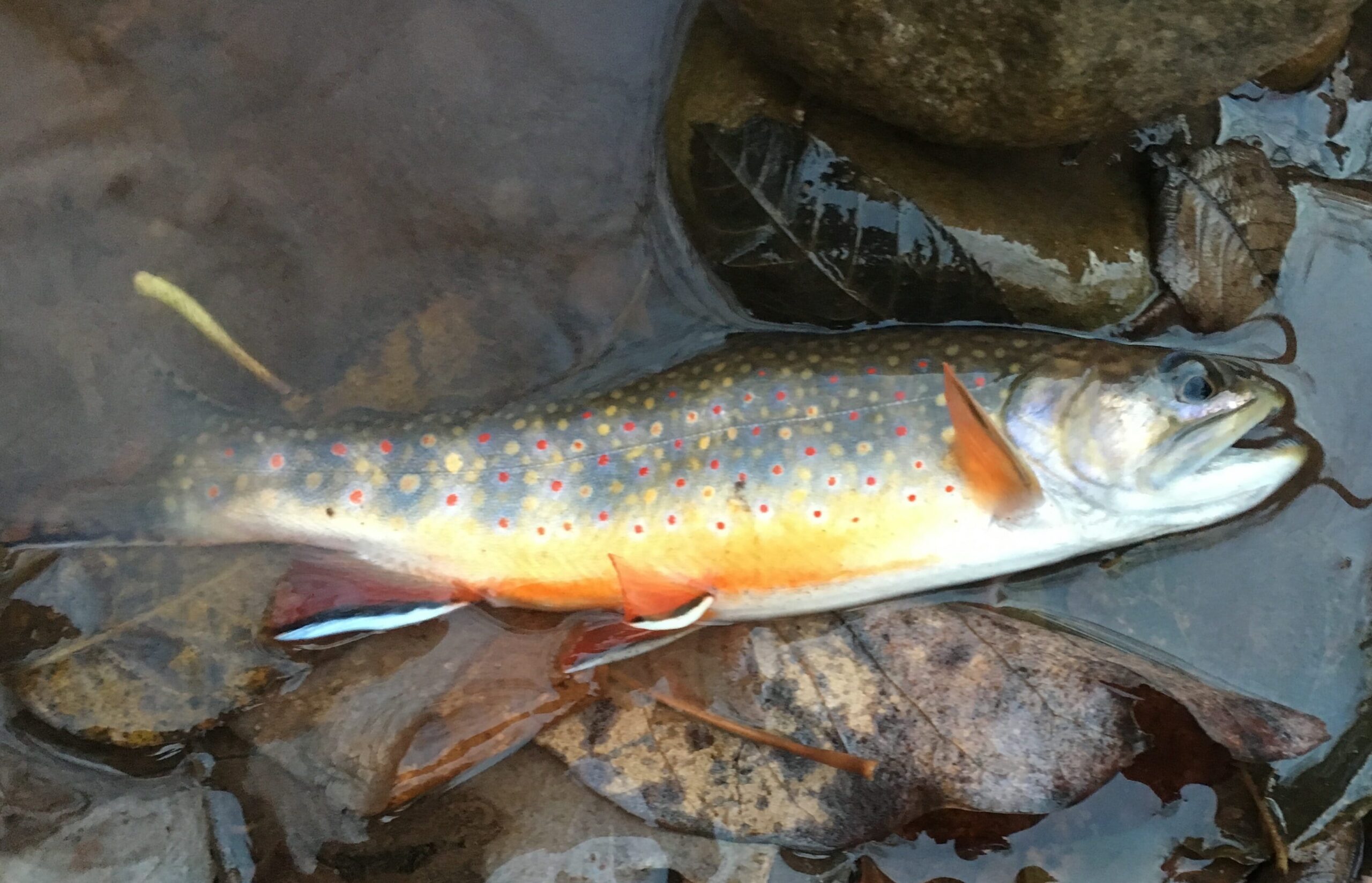By Mark Taylor
“Birds!”
We were drifting near the Bloody Point Bar Light in the Chesapeake Bay near Kent Island when Joe McGurrin made the observation.
“How did I miss those?” he wondered while firing up the outboard on his vintage Grady White cuddy cabin.
A few minutes later we were easing into the fray, the water around us boiling with feeding fish and diving gulls.
TU senior producer Josh Duplechian and I were with Joe as part of a film project we’re working on featuring the Potomac River. The feeding frenzy was going to make for good footage.
And, good fishing.
Joe and I cast into the mess and both were quickly fast to fish — both of which turned out to be striped bass not a whole lot larger than the native brook trout we’d been getting on a film in the West Virginia and Virginia mountains a few days earlier.
Had we been targeting cow stripers with heavy tackle we might have been disappointed. But we were using light gear in anticipation of smaller fish. It was a blast — such a blast that it never really dawned on me to stop long enough to shoot a few still pictures of the stripers we were pulling in on nearly every cast.
So that’s one reason why the fish above is a sardine-sized native brook trout. But another reason is that brookies also just may be most quintessential “It’s all relative” fish there is.
Wild brook trout can get beefy. Twenty inchers are not uncommon in Canada and even Maine. Heck, Dustin Wichterman, who oversees TU’s incredible restoration efforts in the Potomac headwaters, has found 15- and 16-inchers up there, and truly believes the work TU is doing will make 20-inch brookies a reality in West Virginia in his lifetime.
But, for the most part, the native brook trout those of us in the East fool with are diminutive. A 10-incher is a trophy in many streams, and a 12-incher is probably rarer than a 20-inch brown or rainbow in bigger water.
What those critters lack in size they make up for in beauty and spunk. No, they’re not going to get you to your backing, but catching them on a whippy little 2- or 3-weight doesn’t feel like overkill.
As that striper episode from the other day illustrates, this particular theory of relativity doesn’t apply only to trout. Pan-sized smallmouth bass are a hoot on ultralight gear. And, if we’re being honest, even a stunted bluegill can out-pull a tiny trout.
As for trout, there are places where little wild rainbows and browns fill that same kind of small-but-fun niche. But it can be a bit more complicated because even in small water browns and rainbows can become out-sized.
Not long ago I was on a brook trout stream that also has a few browns when I hooked something that did, actually, get me into the backing on my 3-weight. I say “something” because I never saw it before the hook pulled.
Admittedly, it was thrilling while it lasted. The next fish I caught was a 10-inch brook trout and that was quite alright, too.
Mark Taylor is Trout Unlimited’s eastern communications director. He is based in Roanoke, Va.



